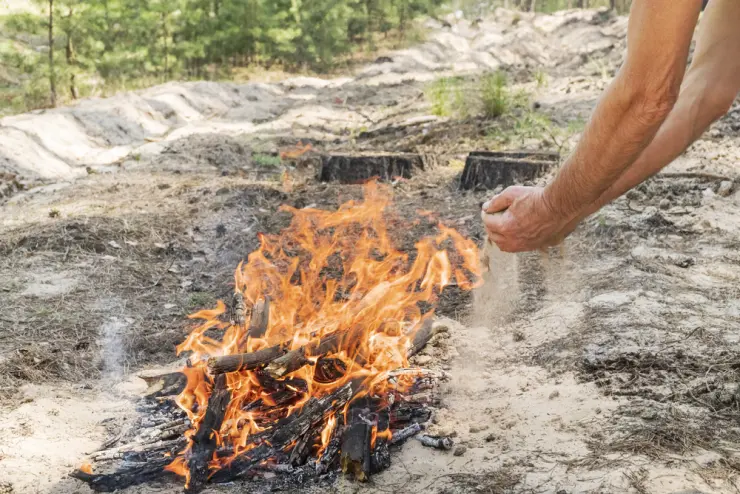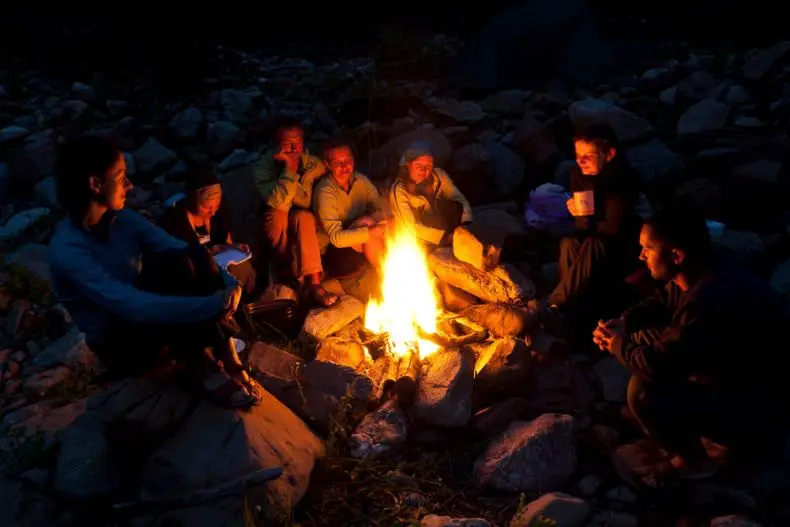Campfire safety is of vast importance, especially during the Summer period. It is much hotter out and the sun is adding heat into the environment that is far higher in temperature than it is the rest of the year. In extremely dry areas, this can result in potential wildfires taking place that can spread at an alarming rate if campfires aren’t extinguished properly.
California wildfires are very well known for these exact issues. While there are other areas that offer dry climates, most get enough rain to sustain things. Some places even do control burns to remove issues on the forest floor that help fires spread. When planting trees, we now know we must plant them a specific distance to further stop wildfires from spreading.
However, the best way to stop a lot of wildfires is by knowing how to put them out properly. In fact, according to the United States Department of Interior, 90% of all wildfires in the country are caused by human beings. Therefore, if we’re the problem, we need to be better. Thus, we’ve written this article to give you the best ways to put fires out properly.
Fire Extinguisher:
We know, lugging around a fire extinguisher seems like suicide on a camping trip. They are bulky, heavy, and hard to carry in a backpack. However, they are excellent at putting out fires. In America, they are required in every apartment AND in most businesses. Especially those with numerous people on the payroll.
This is also why many parks actually have a few in the Park Ranger’s office. To top it off, people tend to think fire extinguishers are massive. But there are many smaller models one can carry around with them exactly for the purpose of camping. Many actually have them in their RV, due to being small enough to fit anywhere inside one.
The smaller ones weigh in at a pretty low amount, less than 5lbs in fact. This makes them ideal to carry around without compromising the other things one must carry. The lower weight also makes it an easy additional item that could be strapped to a backpack or put inside one.
Fire extinguishers are perfect for things like this because of how they work. Since fire needs oxygen to actually work, extinguishers eliminate this entirely. They remove the fuel from oxygen in the air. Since you need oxygen and fuel to mix to create a fire, the severing of this connection stops the fire. Making fire extinguishers ideal for putting out fires quickly and efficiently.
One thing though, always make sure they are not past their refill or expiration dates. Most last anywhere between 5 to 15 years.
Dirt/Sand:
People often forget that dirt and/or sand is usually present when we’re camping. If either are around a fire, you’ll notice how the fire does not ever go beyond either one. There is a reason for that. Dirt and Sand work a lot like fire extinguishers operate.
Dirt is able to stop fire due to the moisture it has. Sand is able to act as a break and can even help to stop a fire when used in bulk. This means to just get a ton of it and drop it on the fire. But do be warned, this is only helpful for smaller fires and this type of sand needs to be close to a water source.
However, the best thing to do is actually a combination of dirt and sand. When you mix the two, they can both work in ways to stop a fire that the other does not. Yet this combo needs to be dropped onto the fire and stirred into it. This will hopefully separate the embers enough to stop the fire entirely.
It is important not to bury your fire with this or either one. You want just enough to put out the fire, as burying could make the sand or dirt hot and then a fire could start if either come off of the extinguished fire.
This is also why it is good to stir the dirt/sand combo into the fire. Separating the embers will prevent them from connecting to others and keeping the fire going. As well as stop them from doing so again.
Water:
As good as the versions of stopping a fire are above, the United States Department of Agriculture claims the best thing to do is use water. They claim the idea is to drown your fire, then mix the ashes and embers into the soil. You’ll want to remove any excess sticks, twigs, leaves, or anything else that could catch on fire too.
Next, stir the embers and ashes in your water and make sure things remain wet. If it does not, add more water. Once you’re done mixing everything, add a little more water. You might want to bury this new ash and ember with water mix, but you do not have to do so. You just need to be sure things are cool to the touch before leaving.
If it’s not cool enough to touch, that means there is still some heat left that “could” start a fire right back up again. Make sure even when things cool down that nothing is near the fire that could catch on fire randomly. It might not mean anything at this point, but it is an extra precaution you’ll want to practice for the best possible safety.






